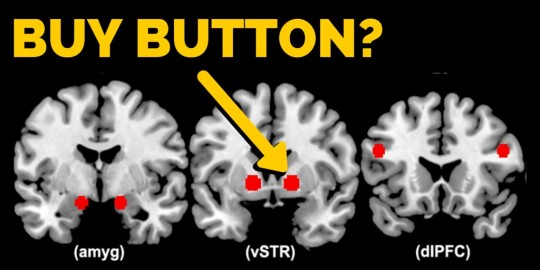Neuromarketing Bats 1 for 6, Still Wins

Lack of validation of neuromarketing techniques in controlled academic studies has been a sore spot for years. Scientific claims don’t get much credence if they haven’t been published in peer-reviewed journals. Even though academic papers may not always be as unbiased as one might like (think about pharmaceutical research by researchers who are funded by or act as consultants to pharma companies), there’s a general assumption that the results are statistically rigorous and can be replicated by other labs.
Neuromarketing techniques haven’t drawn much attention from academics, perhaps because of both their commercial nature and a perception that the science behind these techniques was, maybe, a bit sketchy.
ARF: Adding Bite to Its Bark
The Advertising Research Foundation (ARF) has been trying to buff up the respectability and accountability of neuromarketing by establishing which techniques work and setting standards for their application.

The first ARF NeuroStandards Report didn’t accomplish much on either score. Neuromarketing firms tested their own techniques, and the project concluded with a vague affirmation of neuromarketing’s promise and a suggestion of more research.
Mindful of the outcome of the first effort, ARF funded a second project designed to avoid the previous pitfalls. The result: a new study from Temple University researchers that examined six different market research technologies in an attempt to validate their predictive ability. The work was done at Temple University’s Center for Neural Decision Making at the Fox School of Business. After the data was collected, a different team at New York University processed it and compared it to actual advertising outcomes.
The techniques for evaluating ads (television commercials, in this study) which they tested were:
- Traditional self-reports (surveys)
- Implicit association testing.
- Eye tracking.
- Biometrics.
- EEG.
- fMRI.
The results probably aren’t what most neuromarketing firms were hoping for. The experiments showed that, as tested, the only approach that significantly outperformed self-reports was fMRI. The other approaches had varying degrees of predictive value, but failed to outdo the inexpensive technique of simply asking people what they thought.
Study at @TempleUniv: Most #neuromarketing techniques no better than self-reports. Click To Tweet
A Buy Button… Almost
Human decision-making is complex, and lots of brain areas are involved. But, not only did the Temple researchers find that fMRI studies had the best ability to predict ad effectiveness, they found one brain structure was particularly important. The study concluded that, “activity in the ventral striatum is the strongest predictor of real-world, market-level response to advertising.”
The brain's ventral striatum is the best predictor of real-world response to ads. Click To Tweet
The ventral striatum plays a role in the brain’s reward system and is associated with a variety of human behaviors, emotions, and triggers, including temptation, our desire for novelty, and craving.
This result is significant, but there’s one problem. fMRI is the most costly of the available techniques due to the expensive equipment required, and it has major limitations caused by the need to have the subject immobilized in a noisy, confined space. Sample sizes tend to be small since only one subject can be tested at a time.
More from the Scientists

I had a conversation with the three researchers at Temple’s CNDM who performed the study. Here are a few highlights:
Vinod Venkatraman: If the objective was to come up with an interesting credo, for example, where you have different options within the 30 seconds you want to change 15 seconds, I believe the moment-to-moment ones like biometrics and EEG would have much stronger prediction or help in those cases.
Angelika Dimoka: [Discussing the cost of fMRI studies] The cost of scanning time is going down. The accessibility of MRI scanners is becoming easier and easier. Actually, most of the top business schools right now in the United States and in many countries… have people that they do this type of research… I don’t see that this will be challenging anymore.
Paul Pavlou: [Discussing a sample size of 30 subjects] If you’re trying to make general predictions… these sample sizes are sufficient based on what we know from the neuroscience literature so far.
For the whole 30 minute conversation, check out Scientists Get Closer to The “Buy Button” in The Brain with Angelika Dimoka, Paul Pavlou and Vinod Venkatraman
And For The Rest?
Don’t expect all of the non-fMRI neuromarketing practitioners to either run out and rent fMRI time or cease operations. The finding that EEG and other techniques didn’t outperform self-reporting in this test has a few important limitations that are sure to be brought forward by commercial neuromarketers:
- The data was collected and/or analyzed in a different manner than specific approaches used by commercial firms.
- The performance metrics used to determine success may vary in the real world. Emotional engagement, viewer attention, brand associations, and many other metrics can be important to advertisers.
- Neuromarketing firms may combine multiple techniques to gain more insights.
As with most research projects, this study suggests multiple avenues for further research. The field of neuromarketing as a whole will benefit from this effort, as it opens the door for other academics to reproduce and extend the work.
These results also turn up the heat on commercial neuromarketers to be more transparent and publish data that can be studied and, perhaps, reproduced in other settings.
Let’s conclude this with a quote from the paper itself:
Our findings clearly demonstrate the potential of neurophysiological measures to complement traditional measures in improving the predictive power of advertising success models.
That’s a neuromarketing win.
Study 'clearly demonstrates the potential of neurophysiological measures' to predict ad success. Click To Tweet
